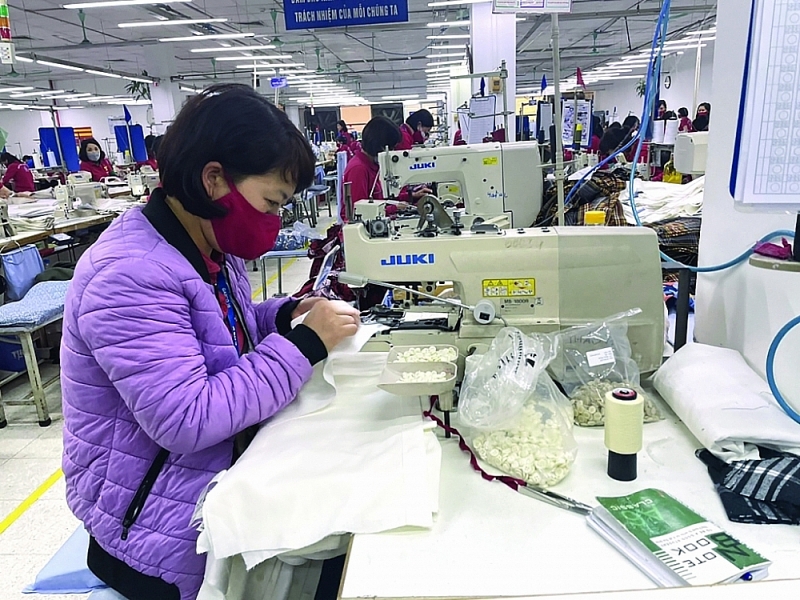 |
|
Enterprises have may oppotunities to export goods to CPTPP members. Photo: Nguyen Thanh |
Exports to Chile and Peru increased significantly
Seafood is one of the key commodities that benefit the most from the CPTPP. The Vietnam Association of Seafood Exporters and Producers (VASEP) stated that 10 markets of the CPTPP bloc make up to 25% of Vietnam’s total seafood export turnover. Many CPTPP countries such as Japan, Canada, Australia, and Mexico are currently Vietnam’s largest seafood export markets. Particularly, Japan has been in Vietnam’s “top 3” seafood export market for many years. In fact, the country has signed a Free Trade Agreement (FTA) with Vietnam since 2008, however, Vietnam was not able to fully implement the rules of origin and take advantage of minimizing export tariffs to Japan. After the CPTPP came into effect, exports to the Japanese market gained more opportunities to flourish.
Ms. Le Hang, Deputy Director of VASEP.PRO, claimed that over the past three years, exports to certain markets in the CPTPP bloc achieved remarkable breakthroughs, particularly Canada, Australia, Chile, and Peru.
While the COVID-19 pandemic caused regression in Vietnam’s seafood exports to major markets, Canada, Chile, Peru, and Australia all recorded positive growth. In particular, exports to Australia increased by 9%, Canada by 14%, exports to Chile and Peru also went up by 14% and 8%, respectively. Regarding seafood products, exports to Australia went up by 17%, while the figure for Canada and Mexico is 15% and 54%, respectively. CPTPP is currently Vietnam’s second-largest shrimp export market. Ms. Hang stated that these results clearly show the positive impact of the CPTPP on seafood exports to countries that conduct an FTA with Vietnam for the first time.
“When the CPTPP first came into practice, countries in the American continent such as Canada, Mexico and Peru are relatively new export markets for Vietnam, unlike the EU, which Vietnam already considered a traditional export market. Nevertheless, Vietnam’s exports to these markets have increased significantly, which showed that enterprises became aware and took advantage of the new Free Trade Agreement generations,” said Mr. Tran Thanh Hai.
Complying with the rules of origin
New generation FTAs like the CPTPP are expected to facilitate and promote Vietnam’s exports in the future. However, the country still needs to overcome many challenges to fully take advantage of the CPTPP.
Mr. Phan Duc Hieu, member of the National Assembly’s Economic Committee, stated that enterprises still have limited awareness of FTAs, despite the effort of the Ministry of Industry and Trade. A survey in 2021 on the CPTPP agreement showed that 69% of businesses only heard or gained preliminary knowledge of the agreement, while 25% had certain knowledge. Having certain knowledge is not enough to raise awareness and enable enterprises to carry out actions accordingly.
Regarding the issue of complying with the rules of origin in the CPTPP over the past three years, Ms. Nguyen Cam Trang, Deputy Director of the Import-Export Department, stated that Vietnamese enterprises have not created a significant impact. She highlighted the importance of research and production adjustment for enterprises as CPTPP’s rule of origin can be much more complicated compared to other FTAs. Authorities’ support has not yet achieved positive results. In addition, the slow “domestic law” of CPTPP prevented enterprises from participating in the market.
Ms. Nguyen Cam Trang emphasized the low usage of Certificates of Origin (C/O) in Vietnam’s exports to countries in the CPTPP. She stated that enterprises were not in control of getting the raw materials constituting the products in line with the rules of origin. Textiles, leather, and footwear are limited in supporting industries. Although agricultural and fishery products’ quality has improved considerably, they still have not met the standards set by the importing country.
She also suggested that creating a favorable environment for enterprises with strong communication and market trade promotion, as well as offering guidance in conducting business plans and improving competitiveness can be crucial for enterprises to fully take advantage of the CPTPP and promote Vietnamese goods exports into these markets. Nevertheless, businesses need to be more proactive in seizing opportunities in the CPTPP, complying with the regulations on rules of origin, and constantly improving product quality, especially agricultural and aquatic products. Product competitiveness can be crucial for businesses to fully take advantage of the integration process.
Mr. Le Anh Duong, Head of the General Research Department, Central Institute of Economic Management, claimed that the CPTPP, unlike many other FTAs, is committed to promoting e-commerce, customs, as well as minimizing technical barriers. Therefore, it is important that Vietnam turn the pressures from CPTPP to institutional reform in the long term.
